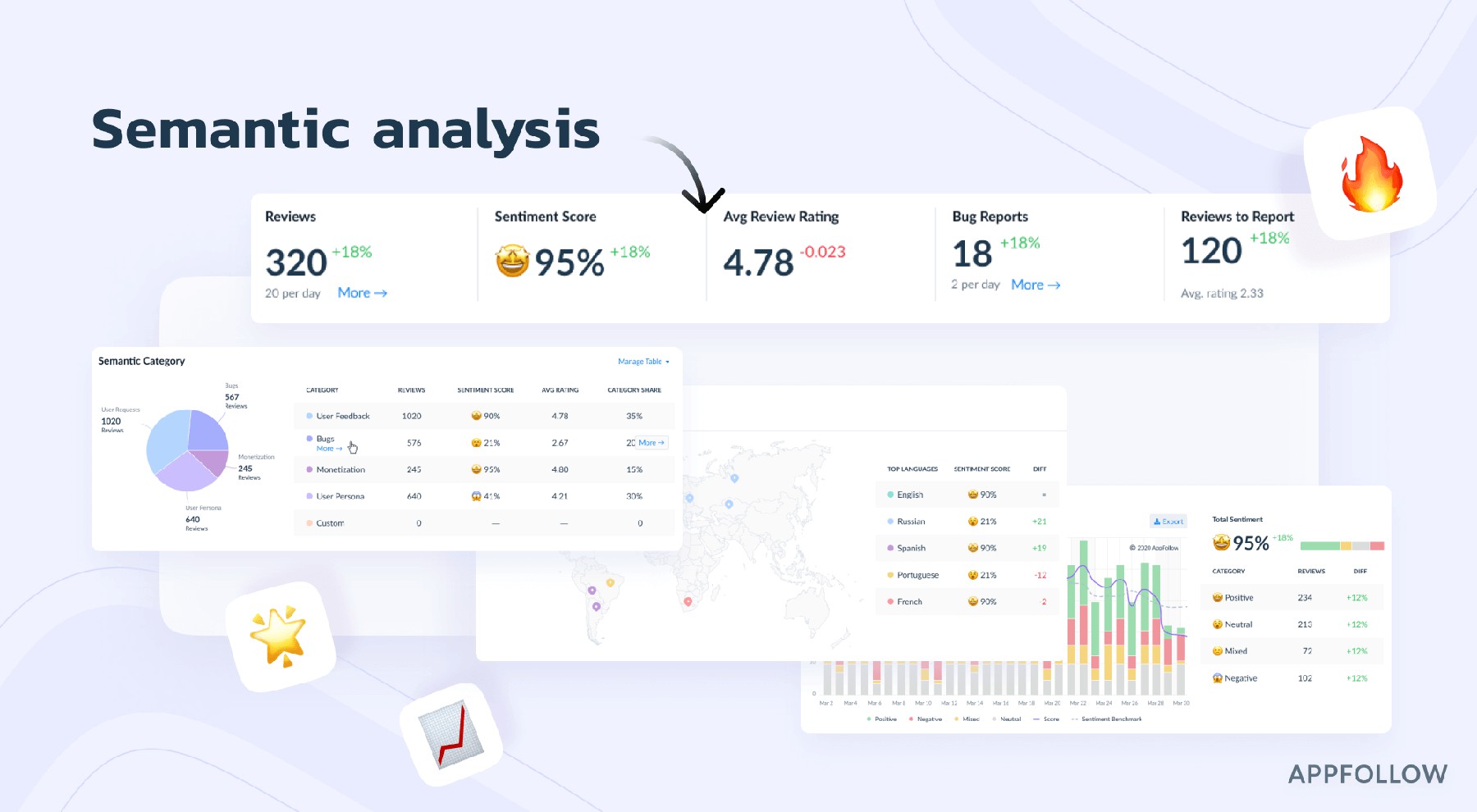How to do customer research: The sauce to building chart-topping digital products

Table of Content:
Behind every successful app stands a team of driven Product Managers. While it takes a lot more to take an app from idea to App Store, Product Managers play an essential role in building an app that won’t just drive installs - but also keep users coming back for more. They do this by identifying the end user, anticipating consumer demands, and translating those into your app’s feature roadmap.
In sum, Product Managers often act as the vital link between users and developers - and have been compared to an orchestra conductor, helping to guide and synchronize disparate development teams.
With research showing that an average mobile app tends to lose somewhere around 77% of its Daily Active Users (DAUs) just three days after install, it’s never been more important to prevent churn and boost retention. In this piece, we’ll be looking at how Product Managers can help drive success for their app, specifically by building a deep understanding of their users through market research.
Why you need to do customer research
There’s a lot that goes into building a successful mobile app, but one thread that unites commercially-popular apps is that they have adopted a user-first mindset. To achieve success, you want your app to become a part of your users’ daily routine, and constantly iterate to integrate the features your users want and need.
But how can you anticipate your users’ demands? Luckily, the answer is fairly simple: by building a deep and holistic understanding of your customers. And you probably also have a wealth of materials already at your fingertips, whether that’s through app store reviews, social analysis or your customer service software. However, there’s a number of other ways to conduct market research - let’s take a look at what those are.
What is customer research?
To drive growth, it’s essential to understand who your users are and what they want out of your app. What made them install, and what keeps them coming back? What features would they like to be introduced, or what bugs do they wish could be fixed?
Conducting market research can help answer all of these questions, as well as give you crucial feedback on product development. Most importantly, it can help you prioritise requests and user feedback on design and development, making sure you're building a roadmap focused on user demands. An added bonus is that as users see you visibly evolving your product in line with their feedback, you’ll likely increase retention rates and build brand loyalty.
There’s a number of ways to conduct market research, and each falls into one of two camps: data-based or opinion-based methods.

Data-based methods refer to all quantitative research. A large chunk of this usually comes directly from your app analytics, such as installs, retention rates or average session per user. These offer an overall “health check” of your app, and can help you pinpoint areas for improvement - for example, when you might be losing the bulk of your users. Your App Store analytics, such as overall rating and keyword ranking, should also be taken into account. Data-based methods can also include multiple-choice consumer surveys or interviews, which we’ll go into more detail shortly.
Opinion-based methods cover all qualitative, or non-numerical, methods of research. These provide more nuance and context to data-based insights, and can be gathered from app store reviews, consumer surveys (particularly open-ended questions), or competitor research.
Three common customer research methods
Now that you’re ready to start gathering insight, it’s time to choose how exactly you want to do so. The method you choose will depend on the outcome you want to achieve - for example, is there a specific element of your app that you’d like to examine? If so, creating a focused survey will be the best way forward. Looking to analyse your existing app feedback? Semantic Analysis will help you process thousands of reviews in seconds. Below, we’ve highlighted three of the most common ways to gather user feedback.
User interviews
Interviewing your users is one of the easiest and most holistic ways to gather valuable user feedback about their likes and dislikes. This is usually done via an online survey, using tools such as Typeform, Survey Monkey or Google Forms, and can feature a mix of multiple choice and open-ended questions. When building out your survey, we recommend keeping your questions fairly focused. While it can be tempting to get as many wide-ranging insights as possible, this makes it harder to group feedback and prioritise accordingly.
Once you’ve set up your survey, you’ll then need to encourage users to participate: share it on your social channels, schedule an email blast, or advertise the survey in-app, which will then deep link the user to the appropriate page. It’s also important to set expectations for your users: let them know how long the survey will take to complete, make sure your questions are straightforward and easy to understand, and be clear that by taking the survey, they’ll be able to have direct input on your product roadmap. Finally, to further boost response rates, you can also incentivise users with in-app rewards or gift cards.
Review Analysis
App reviews are an important channel for user feedback, and can offer key insights on your consumers’ pain points. But once you hit a certain number of installs, it can be tough to keep up with reviews - and you can easily lose the most valuable messages highlighting critical issues or feature requests. At this point, it’s worth investing in a tool that can process and analyse these reviews for you - such as AppFollow’s latest Semantic Analysis 3.0 tool.
Semantic Analysis uses machine learning algorithms to process a huge amount of user feedback at scale. It does this by automatically grouping all reviews by category, according to keywords within each review - such as “bugs”, “UX”, or “in-app purchase”. This also weeds out spam and repetitive “thank you” reviews, making it easier for you to find actionable insights, evaluate user sentiment and identify brand ambassadors.
To do this within the AppFollow dashboard, simply navigate to the “User Feedback” tab to see the most common topics mentioned in your app reviews. Relevant teams can also jump in to investigate related issues, saving Product Managers’ time - for example, you could send the “bug” section directly to your tech team to investigate if an issue appears. A separate tag such as “UI issues” can offer insights on how user-friendly your app really is.
One of the most helpful aspects of AppFollow’s Semantic Analysis is the market-specific insights it offers, particularly for apps that operate across several regions. Ever asked yourself what are the most common feature bugs in the UK, how your subscription model works for Spain compared to Italy, or what features users ask for in Canada compared to India? You can easily find all those answers in our dashboard - see an example below - with support in over 20 languages, across 30 tags.

Competitor research
Analysing your competitors’ strengths and weaknesses is another vital component of your market research. This will help you to refine your own goals, inform product development, stay abreast of industry trends, learn best practises, and mistakes to avoid.
When conducting competitor research, you’ll want to look at their feature development, monetization strategy, business model, keywords ranking, app store page design, localisation and target markets. You’ll also need different tools depending on what metrics and channels you’re tracking. Tools such as SEMRush, for example, can help you understand what platforms your rivals are using when it comes to advertising and media placements, or how they’re ranking when it comes to organic search.
Analyzing your competitors’ app reviews can also give you first-hand insight into their users' pain points. This gives you the opportunity to incorporate both your own and your competitors’ feature requests into your roadmap. But there’s no need to sort through all their reviews manually: our Semantic Analysis tool can also be used on competitors’ reviews. It also shows their overall Sentiment and Quality score, average app rating, and user engagement score by country and chosen time frame, as highlighted in the screenshot below.

How to use your customer research
Now that you’ve gathered all your feedback, how can you put this into practice? While it may seem overwhelming, we have some simple tips to help manage the process.
Identify common themes
It’s likely you’ll see common themes appear throughout your market research, and bucketing these together will help you see the wood from the trees. How you group these themes together will depend heavily on your chosen research method - whether that’s via a spreadsheet, using tags, or even old-fashioned post-its. By counting the number of times a certain theme appears, you’ll also gain a good understanding of what bugs to prioritise, or what new features will help boost retention.
Balance quick fixes with prioritising new features
Once you’ve identified key areas for improvement, it’s time to consult your developers. They will help you to understand which of these bugs or features are a quick fix away, and how long the more extensive tasks will take. From there, you can better prioritise and start building out a realistic roadmap and timeline.
A word of caution: don’t feel obliged to take into account all of your users’ feedback. Not only will this overwhelm your developers, but you may decide that something just doesn’t make business sense for your app. If you’re investigating whether to build a new feature, it’s always helpful to check in with the competition - this will give you a good sense of the business impact of introducing such a feature.
Keep your users in the loop
Acknowledging your users’ feedback and letting them know you’re integrating it into your product will go a long way to building brand loyalty. This is another instance where AppFollow’s Semantic Analysis can help you to do more and click less. Because all reviews have already been grouped together under the same tag, you can simply bulk-reply to all reviews about a specific topic - thanking users for their feedback and updating them on your product roadmap. Don't let Apple App Store review catch you off guard - be prepared with our guide.
While there’s no one-size-fits-all approach to market research, we highly recommend including app reviews in product research if you aren’t already. Your users are the be-all and end-all of your app: the reason you developed it in the first place, and the difference between success and failure. By digging into your reviews, listening to users’ feedback, and integrating it into your roadmap, you’ll continue to innovate and improve - and see your app climb to the top of the charts. To deal with the winners, get positive review response examples and use them freely - on the house.
Looking to learn more about AppFollow’s Semantic Analysis 3.0? Read more details in our product update, or reach out to us for a demo. Want better reviews? Try our online reputation software.






